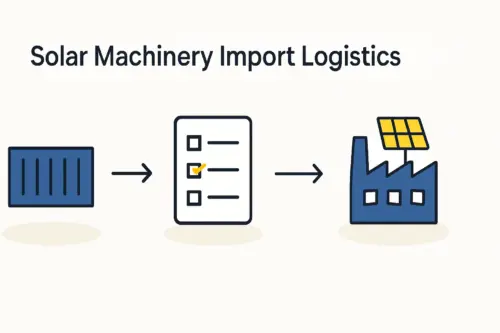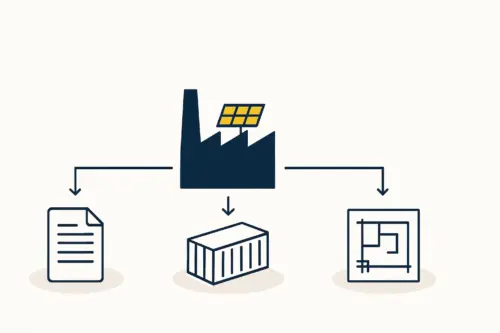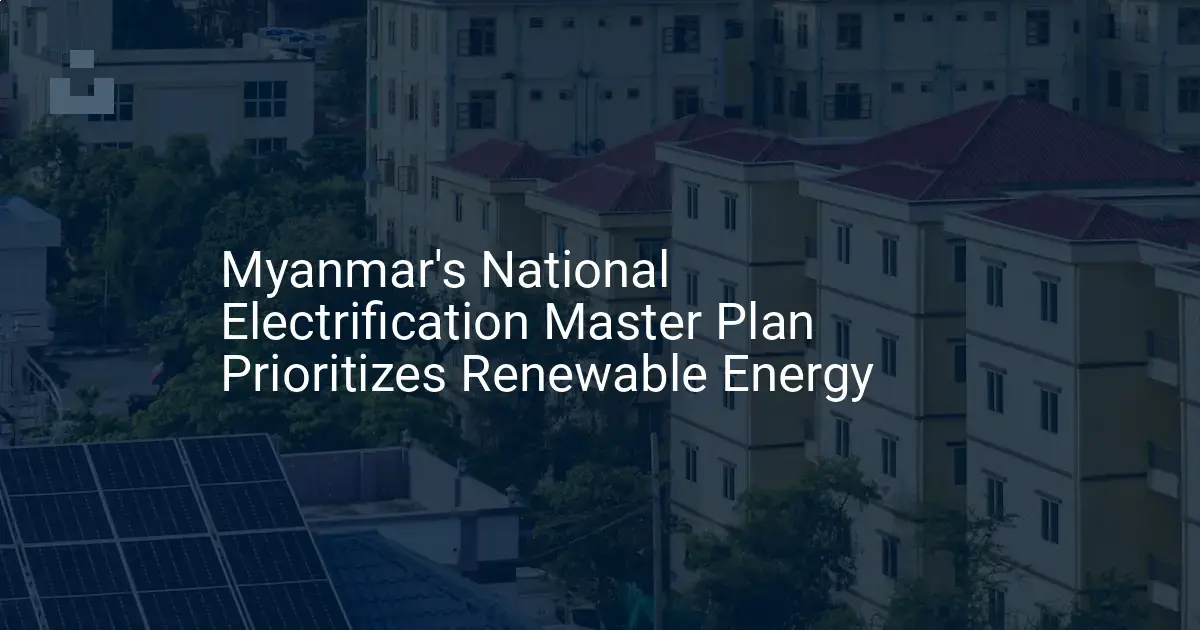When entrepreneurs consider a new venture in solar module manufacturing, their focus often goes first to machinery, financing, and location. But operational success hinges on a less tangible asset: the workforce.
In a market like Myanmar, with its large and youthful population, the critical question isn’t whether labor is available, but how to transform that potential into a skilled, efficient, and reliable production team. While the challenge is significant, it’s entirely manageable with a strategic approach.
This article outlines a framework for recruiting, training, and retaining personnel for a solar module assembly factory in Myanmar. Drawing on labor market data and practical experience setting up manufacturing operations in emerging economies, it offers a clear path for investors.
Understanding the Myanmar Labor Market Context
Building an effective recruitment strategy begins with understanding the local landscape. Myanmar’s demographic profile presents both an opportunity and a unique set of challenges for employers.
Reports from institutions like the UNDP and the World Bank show that Myanmar has a youthful population, with a large portion under the age of 30. This creates a substantial pool of potential entrants to the industrial workforce. However, the formal manufacturing sector is still developing. A GIZ study on the country’s technical and vocational education and training (TVET) system, for instance, highlights that while general literacy is high, direct experience with automated industrial processes is often limited.
For a solar module manufacturer, this dynamic means two things. First, there’s a large, motivated workforce ready to learn new skills. Second, the employer must provide comprehensive, structured training, as they cannot assume prior factory experience.
The key to success is not searching for pre-existing solar technicians, but establishing a system to create them.
Key Roles and Skill Levels on the Assembly Line
A modern solar module assembly line requires a mix of skill levels, and understanding these roles is essential for structuring both recruitment and training. Operations generally break down into three tiers:
Semi-Skilled Operators
This group makes up the core of the production workforce. After dedicated training, they operate specific machines in roles that require precision, attention to detail, and the ability to follow standardized procedures.
- Stringer Machine Operators: Handling the automated soldering of solar cells into strings.
- Layup Station Operators: Assembling the ‘sandwich’ of glass, EVA, cell matrix, and backsheet before lamination.
- Laminator and Framing Machine Operators: Overseeing automated processes that are critical to module quality and durability.
Skilled Technicians and Quality Control
These roles require a deeper technical understanding, often involving troubleshooting, machine calibration, and quality assurance.
Ready to make big Profits?
The solar Industry is Booming
WE HELP NEWCOMERS to the solar industry start their own solar module production line. Customers can make BIG PROFITS by selling modules and finding investors, without wasting money and time on things they don't need!
- Maintenance Technicians: Responsible for preventative maintenance and repair of the production machinery. An electrical or mechanical background is highly beneficial.
- Quality Control (QC) Inspectors: Performing visual inspections, electroluminescence (EL) testing, and ‘sun simulator’ (IV) testing to ensure each module meets specifications.
- Team Leaders/Supervisors: Experienced operators promoted to oversee a section of the line, manage staff, and ensure production targets are met.
Unskilled and General Labor
These entry-level positions require minimal prior experience and primarily involve manual tasks. They serve as an excellent entry point into the factory, with strong potential for advancement.
- Material Handlers: Moving raw materials like glass, cells, and aluminum frames to the line.
- Packing and Logistics Staff: Preparing finished modules for shipping.
A Strategic Approach to Recruitment and Training
A proactive, multi-stage approach is essential for building a capable team from the ground up.
Sourcing and Recruitment Strategy
Rather than relying solely on general job postings, a targeted strategy yields better results. Consider engaging with:
- Local Technical and Vocational Schools: Partnering with TVET institutions can connect you with candidates who have foundational mechanical or electrical knowledge and a demonstrated interest in technical work.
- Community Leaders: In many regions, engaging with local community leaders can build trust and create a reliable channel for finding motivated candidates.
- Employee Referrals: Once an initial team is in place, a referral program can be a powerful tool for finding trustworthy new hires.
The ideal candidate profile for an operator is not necessarily someone with factory experience, but an individual who demonstrates good manual dexterity, a willingness to learn, and a commitment to procedural discipline.
The ‘Train-the-Trainer’ Model
For a new factory, one of the most effective methods is the ‘train-the-trainer’ model. This approach is frequently implemented in turnkey solar manufacturing lines.

The process involves selecting a small group of high-potential local hires—often those with some prior technical aptitude—and sending them for intensive training at the equipment manufacturer’s facility. This initial team learns the machinery, processes, and maintenance protocols directly from the experts.
Upon their return, they become the core trainers for all new hires. This accomplishes two critical goals:
-
Knowledge Localization: It embeds deep technical knowledge within the local team, reducing long-term reliance on foreign experts.
-
Scalability: It creates a sustainable, in-house system for training new staff as the factory expands.
Structured On-the-Job Training
Every new operator, regardless of background, should undergo a formal training program. Based on experience from numerous J.v.G. Technology GmbH projects, a successful program includes:
-
Classroom Instruction (1-2 weeks): Covering safety protocols, the fundamentals of photovoltaic technology, quality standards, and the function of each machine on the line.
-
Supervised Practice (2-4 weeks): Working directly on the production line under the close supervision of a trainer or team lead, with a focus on mastering standard operating procedures (SOPs).
-
Probationary Period (3-6 months): Operating with increasing independence but with regular performance reviews and quality checks.
This structured process ensures consistency and quality right from the start of production.
Retention: Protecting Your Investment in Human Capital
Recruiting and training a skilled workforce is a significant investment. Retaining that talent is crucial for long-term profitability and operational stability. Key retention strategies include:
- Offering Competitive Compensation: Provide wages and benefits that are competitive within the local manufacturing sector.
- Maintaining a Safe and Professional Work Environment: Implement and enforce high standards for occupational health and safety (OHS).
- Providing Clear Career Paths: Show employees a clear path for advancement from operator to team lead, supervisor, or technician.
- Fostering a Culture of Respect: A professional and respectful workplace culture is a powerful, low-cost retention tool.
By investing in employee development and creating a positive work environment, a company becomes an employer of choice, better able to attract and retain the best available talent.
Frequently Asked Questions (FAQ)
-
Do we need to hire experienced solar technicians from abroad?
Initially, it can be beneficial to have one or two experienced expatriate supervisors to oversee the ramp-up phase and mentor the local ‘train-the-trainer’ team. However, the long-term goal should be to develop a fully self-sufficient local management and technical team within two to three years. -
What is the typical training duration for a machine operator?
A new operator typically requires one to two months of intensive training and supervised practice to become proficient. Achieving maximum speed and efficiency while consistently meeting quality standards can take an additional three to six months. -
How many employees are needed for a small-scale (50 MW) factory?
A 50 MW factory operating on a single shift typically requires 30 to 40 employees. This includes production operators, quality control staff, maintenance technicians, logistics personnel, and administrative support. -
What educational background is best for entry-level operator positions?
A secondary school education is generally sufficient. Attributes like attention to detail, steady hands, a positive attitude toward learning, and the ability to work in a team are more important.
Conclusion and Next Steps
The challenge of building a workforce in Myanmar is not a barrier to entry but a core strategic task that, when executed properly, becomes a competitive advantage. The local labor market offers immense potential for investors who are prepared to invest in structured training and long-term employee development.
By establishing robust systems for recruitment, skills transfer, and retention, a new solar module factory can achieve high levels of productivity and quality, powered by a motivated and capable local team. This foundation is essential for any new venture aiming for lasting success in solar panel manufacturing.







